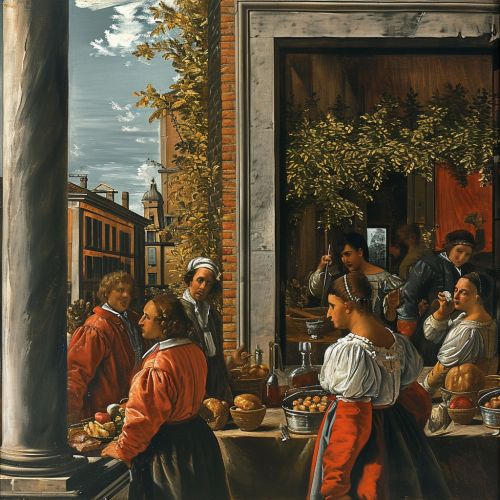Realism (arts)
Origins and Development
Realism in the arts is a movement that began in the mid-19th century, in reaction to the highly stylized and romanticized depictions of the world in earlier movements such as Romanticism. Artists and writers sought to portray the world as it truly was, without embellishment or idealization. This movement was most prominent in visual arts, literature, and theatre.


Visual Arts
In visual arts, realism is characterized by the depiction of subjects as they appear in everyday life, without embellishment or interpretation. The movement began in France in the 1850s, with the work of artists such as Gustave Courbet and Jean-Baptiste-Camille Corot. These artists rejected the idealized and often mythical subject matter of Romanticism, instead choosing to depict ordinary people and scenes from contemporary life.
Literature
Realism in literature emerged in the mid-19th century, primarily in Europe and the United States. Realist writers, such as Gustave Flaubert, George Eliot, and Leo Tolstoy, sought to depict life as it was, focusing on ordinary characters and everyday situations. They eschewed the grand narratives and heroic characters of Romantic literature, instead focusing on the mundane and the quotidian.
Theatre
In the theatre, realism was a reaction against the melodramatic style that dominated the stage during the 19th century. Realist playwrights, such as Henrik Ibsen and Anton Chekhov, sought to portray characters and situations that were recognizably real and relevant to contemporary audiences. This often involved a focus on domestic and social issues, and a rejection of the sensationalism and escapism of traditional theatre.
Characteristics of Realism
Realism in the arts is characterized by a number of key features. These include a focus on contemporary life and its everyday activities, a rejection of the idealized and the heroic, and an emphasis on the ordinary and the mundane. Realist artists and writers often sought to depict the world as it was, without embellishment or interpretation.
Focus on Contemporary Life
One of the key characteristics of realism is its focus on contemporary life. Rather than depicting historical events, mythical stories, or heroic narratives, realist artists and writers sought to portray the world as it was in their own time. This often involved a focus on the everyday activities of ordinary people, and a rejection of the grand narratives and idealized subjects of earlier artistic movements.
Rejection of the Idealized and the Heroic
Realist artists and writers rejected the idealized and heroic depictions of the world that were common in earlier artistic movements. Instead, they sought to portray the world as it was, with all its flaws and imperfections. This often involved a focus on the mundane and the ordinary, and a rejection of the sensationalism and escapism of traditional art and literature.
Emphasis on the Ordinary and the Mundane
Realism is characterized by an emphasis on the ordinary and the mundane. Rather than focusing on heroic characters or grand narratives, realist artists and writers sought to depict the everyday activities and experiences of ordinary people. This often involved a focus on domestic and social issues, and a rejection of the sensationalism and escapism of traditional art and literature.
Impact and Influence
The impact and influence of realism can be seen in a number of areas. It has had a profound effect on the development of the arts, influencing a wide range of artistic movements and styles. It has also had a significant impact on the way we perceive and understand the world, challenging traditional notions of beauty and value, and encouraging a more critical and realistic view of society and the human condition.
Influence on the Arts
Realism has had a profound influence on the development of the arts. It has been a key influence on a number of artistic movements and styles, including Impressionism, Naturalism, and Modernism. It has also had a significant impact on the development of literature and theatre, influencing a wide range of writers and playwrights.
Influence on Perception and Understanding
Realism has also had a significant impact on the way we perceive and understand the world. By depicting the world as it is, without embellishment or interpretation, realism challenges traditional notions of beauty and value. It encourages a more critical and realistic view of society and the human condition, and has been a key influence on a range of social and cultural movements.
